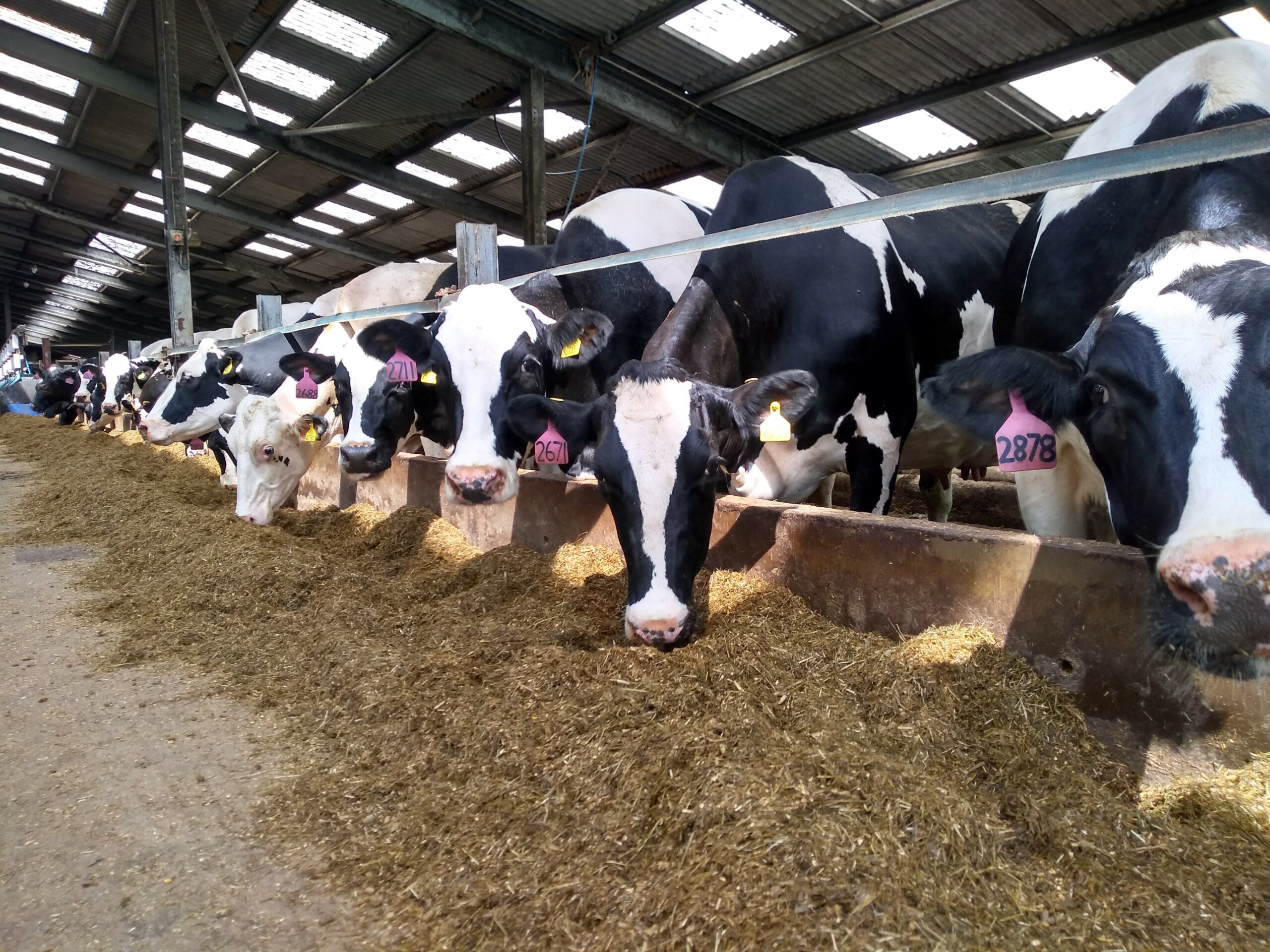High milk yields without soya? Yes we can.
Soya is now a thing of the past at Crichton Royal Farm. We’ve not fed soya to our 10,000-litre annual yielding SRUC dairy herd in Dumfries, South West Scotland since April 2020. This change was prompted in particular by our milk buyer, Arla. Arla is responding to the market that has become sensitive about where our feed comes from. This means greater reliance on locally grown feeds to help reduce product carbon footprint and avoid transporting imported feeds such as soya over long distances. While some Arla farmers in the UK still use soya that is certified as being from a sustainable source, we were keen to look at ways to reduce the environmental footprint of our milk. The removal of soya from the diet is an obvious step forward.
A protected rapeseed meal product provided the foundation of the switch. This was complemented by normal rapeseed meal and wheat distillers dark grains adjusted so that the purchased high protein concentrates had the same metabolisable energy, crude protein, rumen degradable protein, rumen undegradable protein, starch, sugar and fibre (NDF). Soya hulls were also replaced with sugar beet pulp and some palm kernel to maintain the fibre content.
The feeding of the new concentrates started approximately one month after the herd moved from 3x/day to 2x/day milking: a management decision taken in response to COVID to reduce staffing levels required at the farm in case of illness or staff having to self-isolate.
We noticed no difference in milk yield or milk composition in the first month after the switch to the soya-free diet. While large scale studies with large numbers of cows are generally required to make statistically valid assessments of effects on fertility, some fertility parameters were looked at in the year prior to the diet change and the subsequent 10-month period without soya. Results are shown in the table below.
Table 1. Results of herd-level assessment of fertility-related parameters

The change in diet was followed by fewer days to conception, fewer services per conception and improvements to the 100-day in calf rate and 200-day not in calf rate. While our observations indicate that more cows became pregnant with a shorter time interval between calvings after the dietary change, this improvement cannot be attributed to the dietary change as the concentrates were formulated to be nutritionally the same. There are a number of factors related to management and forages that are likely to have influenced fertility on the farm as follows:
While the move from soya to protected rapeseed meal has probably not made our farm more profitable, we are confident it has reduced our carbon footprint. According to the GFLI database, the carbon equivalent for solvent extracted rapeseed meal is 498 kg CO2e/t and for solvent extracted soyabean meal, 3,628 kg CO2e/t (based on economic allocation and including land use change). We are reassured by the changes in our herd’s fertility but we do not attribute this to the change from soya to native protein sources. The other changes are more likely to have led to this improvement.
A protected rapeseed meal product provided the foundation of the switch. This was complemented by normal rapeseed meal and wheat distillers dark grains adjusted so that the purchased high protein concentrates had the same metabolisable energy, crude protein, rumen degradable protein, rumen undegradable protein, starch, sugar and fibre (NDF). Soya hulls were also replaced with sugar beet pulp and some palm kernel to maintain the fibre content.
The feeding of the new concentrates started approximately one month after the herd moved from 3x/day to 2x/day milking: a management decision taken in response to COVID to reduce staffing levels required at the farm in case of illness or staff having to self-isolate.
We noticed no difference in milk yield or milk composition in the first month after the switch to the soya-free diet. While large scale studies with large numbers of cows are generally required to make statistically valid assessments of effects on fertility, some fertility parameters were looked at in the year prior to the diet change and the subsequent 10-month period without soya. Results are shown in the table below.
Table 1. Results of herd-level assessment of fertility-related parameters

The change in diet was followed by fewer days to conception, fewer services per conception and improvements to the 100-day in calf rate and 200-day not in calf rate. While our observations indicate that more cows became pregnant with a shorter time interval between calvings after the dietary change, this improvement cannot be attributed to the dietary change as the concentrates were formulated to be nutritionally the same. There are a number of factors related to management and forages that are likely to have influenced fertility on the farm as follows:
- Cows moved from 3x/day to 2x/day milking on 23rd March 2020. Daily yield fell by 0.74 litres/day (-2.25%). It is likely that cows did not achieve as high peak yields on 2x milking and that they were under less metabolic stress. This could have contributed to better fertility.
- New mattresses were installed in December 2019/January 2020 which increased lying time by on average 1.5 to 2 hours. Better cow comfort with increased lying time could have had a beneficial effect on fertility, especially if it reduced lameness.
- A new concrete footbath was installed in 2020 and this improved the efficacy of footbathing. It is possible that less digital dermatitis in the herd could have had a knock-on effect on fertility.
- The farm operates a 5-cut grass silage system and has 17 pits (some of which are for whole-crop and maize silage) so grass silage will have changed a few times over the two time periods, meaning that the forage component of diets changed over time.
While the move from soya to protected rapeseed meal has probably not made our farm more profitable, we are confident it has reduced our carbon footprint. According to the GFLI database, the carbon equivalent for solvent extracted rapeseed meal is 498 kg CO2e/t and for solvent extracted soyabean meal, 3,628 kg CO2e/t (based on economic allocation and including land use change). We are reassured by the changes in our herd’s fertility but we do not attribute this to the change from soya to native protein sources. The other changes are more likely to have led to this improvement.



